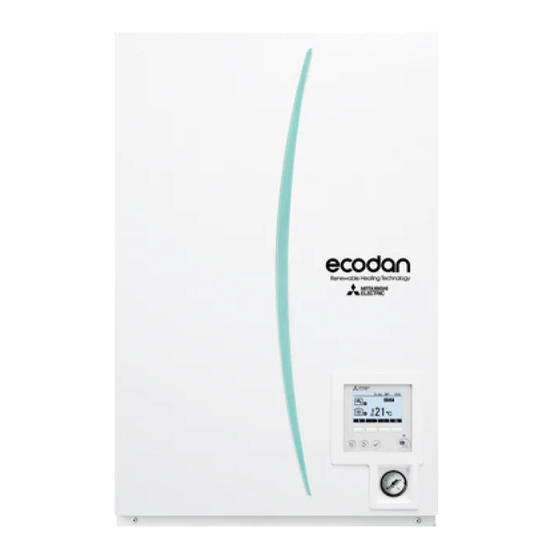
Table of Contents
Advertisement
HYDROBOX
SERVICE MANUAL
[Model Name]
EHSD-MED
EHSD-VM2D
EHSD-VM6D
EHSD-YM9D
EHSD-YM9ED
EHSD-TM9D
ERSD-MED
ERSD-VM2D
ERSD-VM6D
ERSD-YM9D
[Service Ref.]
Refer to page 2.
HYDROBOX
EHSC-MED
EHSC-VM2D
EHSC-VM6D
EHSC-YM9D
EHSC-YM9ED
EHSC-TM9D
ERSC-MED
ERSC-VM2D
ERSC-VM6D
ERSC-YM9D
EHSE-MED
EHSE-YM9ED
ERSE-MED
ERSE-YM9ED
EHPX-VM2D
EHPX-VM6D
EHPX-YM9D
EHPX-MED
EHPX-YM9ED
ERPX-MD
ERPX-VM2D
ERPX-VM6D
ERPX-YM9D
CONTENTS
1. REFERENCE MANUAL ................................... 3
2. SAFETY PRECAUTION ................................... 4
3. SPECIFICATIONS ............................................ 6
4. PART NAMES AND FUNCTIONS .................. 8
5. OUTLINES AND DIMENSIONS ....................... 9
6. WIRING DIAGRAM ......................................... 11
7. FIELD WIRING ............................................... 17
8. WATER SYSTEM DIAGRAM ......................... 19
9. CONTROLS ................................................... 22
10. TROUBLESHOOTING ................................... 43
11. DISASSEMBLY PROCEDURE ...................... 60
12. SUPPLEMENTARY INFORMATION ............. 80
13. SERVICE AND MAINTENANCE ................... 81
PARTS CATALOG (OCB712)
October 2020
No. OCH712
REVISED EDITION-C
Revision:
• ERSD-VM6D, ERSD-
YM9D, ERSC-VM6D,
ERSC-YM9D and
ERPX series have been
added.
• Some descriptions
have been modified in
REVISED EDITION-C.
OCH712B is void.
Note:
• This manual describes
service data of
Hydrobox only.
Advertisement
Table of Contents






Need help?
Do you have a question about the EHSD-MED and is the answer not in the manual?
Questions and answers